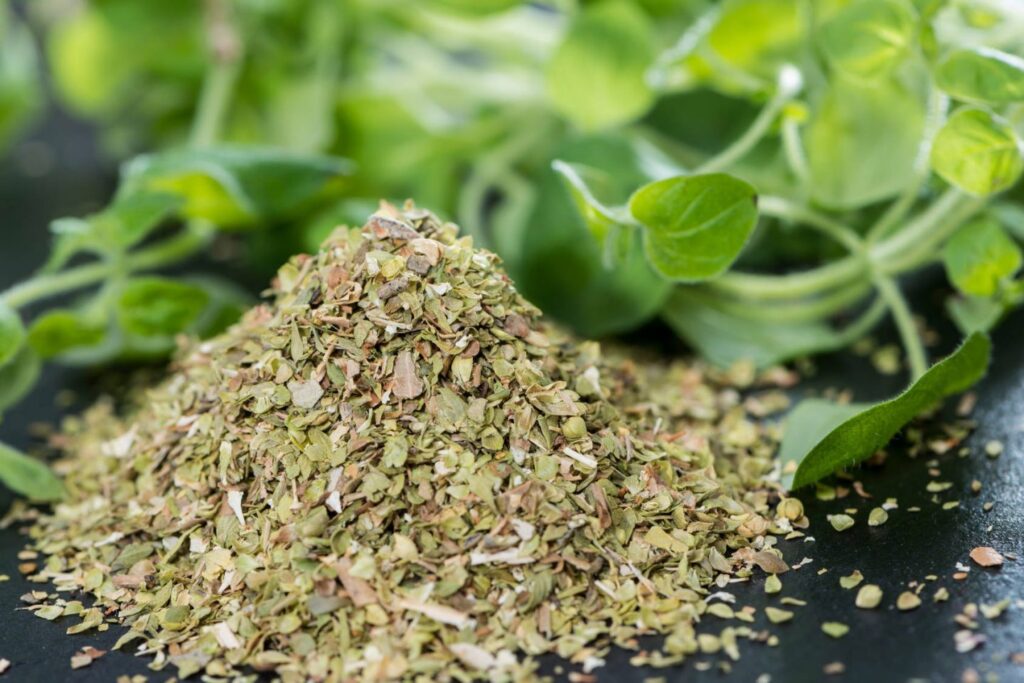Oregano
General
Oregano – a widely known herb, added most commonly to pizza’s. Accesible basically in every grocery store. Comes in multiple types – Greek, Italian. Fresh oregano is usually bright green in color, although
there is a wide range of hues among different cultivars ranging from yellow to
dark green. The color of the dried herb ranges from light brownish green to
darker green. Historically, in ancient times, oregano was used to spice up meats, fish, and even as a flavoring for wine. In the middle ages, people continued to use it – they were looking for any medicine they could commonly find, and it had many medical properties.
Taste of the herb
The flavour is typical of this type of herbs – really strong, kinda floral, really uplifts the taste of many Italian dishes, can be also served in many types of appetisers, ex. olive oil with fresh oregano and salt, eaten with bread.

Growth
Oregano typically grows in warm climates, needing fertile, rich soil with a neutral pH around 7. Found in Mediterranean countries and Asia.
Mythology
Oregano was first used in ancient Greece. It may seem surprising, but it was goddess Aphrodite, despite her being a deity of beauty and love.
She wanted it to be a symbol of joy, after all the strong smell could bring back many happy memories. The etymology of the word „oregano” itself can be split in two parts: „oros”, for “mountain,” and „ganos”, for “joy”, the whole word meaning „joy of the mountains”.
Medical uses
Medical uses for oregano date back to the ancien Greek and Roman empires where applications of the leaves were used to treat skin sores, to relieve aching muscles, and as an antiseptic. Oregano also has been used in traditional medicines for many diseases such as asthma, cramping, diarrhea. An oregano infusion is still used in Greece as a alt medicine remedy against cold and to maintain general health.

Cosmetic value
Oregano is used in many cosmetic products worldwide. It is especially valued as an ingredient of anti-acne balms and oils. It also soothes the feeling of burning and itching. Oregano, when applied to damaged skin may prevent its premature aging due to the fact that it contains a lot of vitamin C. Another way we can use oregano in beauty products is to add it to massage oils, which helps to combat cellulite. It is also common in haircare as it stimulates hair growth and helps treating dandruff.
Culture
The ancient citizens of Elláda believed that the oregano that was consumed by the cows grazing on the fields made the beef better. Additonally, another ancient belief indicates that after eating oregano you will have a dream about your future soulmate.
Probably the best substitute would be fresh marjoram, obviously there’s a slight difference in taste, but it’s pretty close. The taste is less intense, so you probably should increase the amount used. Another option might be fresh thyme, the flavours are quite different, but they are used in the same cuisines and often simultaneously, so the taste compliments itself. There are also premade mixes and Greek seasonings, they could be used in an emergency, because dried oregano is used in most of them. We just have to keep in mind our main goal is the overall taste of the dish.
Oregano: Fresh vs Dried
Descriptions of this herb in a fresh state often mention that its flavour for some folks can be too intense. However, it is recommended to use a fresh oregano while cooking vegetables and then the flavour softens. The dried version gives you more control over the taste of the dish. Some people think that dried oregano lacks a little bit of the paunchy flavour compared to the fresh one, but it’s not true. That’s great news, bearing in mind that the dried one is more affordable.
Sources
12 Aromatic Herbs of Ancient Greece – Their Myths and Uses
https://www.mccormickscienceinstitute.com/our-research/scientific-overviews/msi-funded-paper-potential-health-benefits-of-oregano
https://botanologio.com/en/oregano-and-its-cosmetic-uses/
https://phdessay.com/literature-oregano/